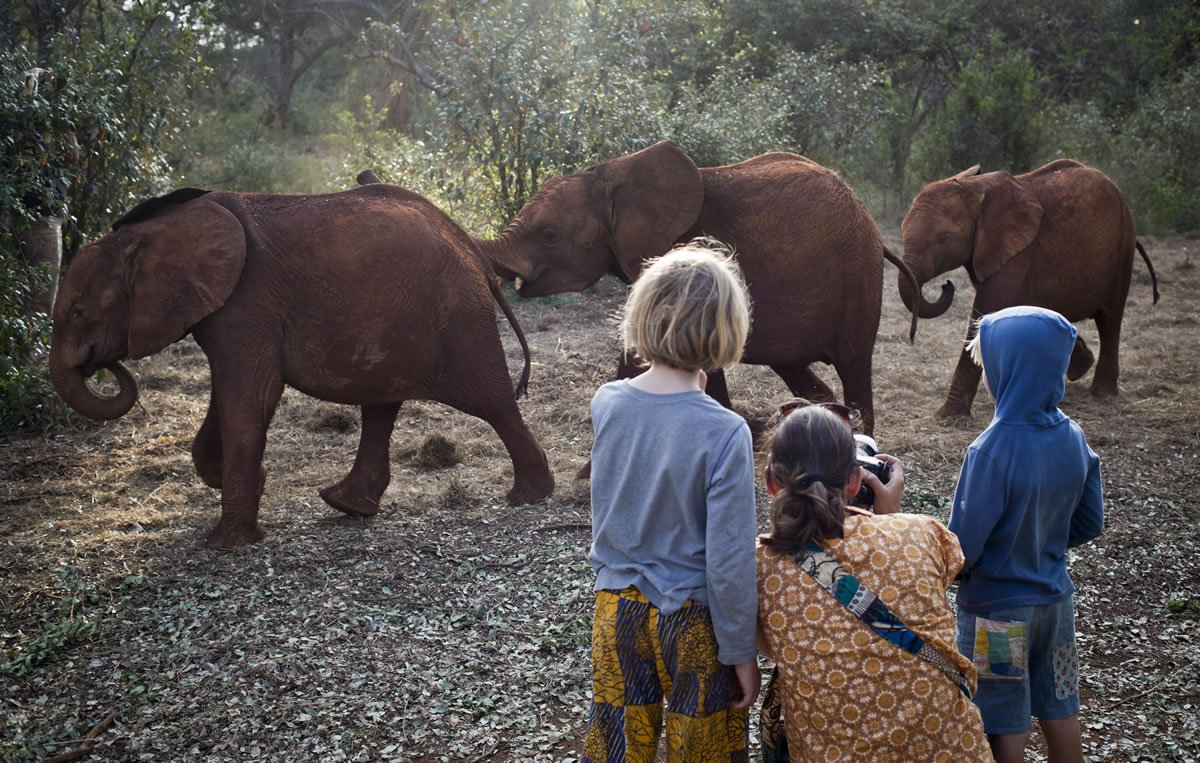JOHANNESBURG — Standing in his flatbed truck, Marc Goss touches “take off” on his iPad 3 and a $300 AR Drone whirs into the air as his latest weapon to fight elephant poachers around Kenya’s Maasai Mara National Reserve.
“It’s an arms race,” said Goss, whose green khaki clothing shields him from thorny acacia branches in the 74,132 acres of savanna he protects. “We’re seeing larger numbers of poachers.”
Besides the almost 2 foot-long drone, Goss and other conservationists are using night-vision goggles and Google Earth to halt the decline of Kenya’s wildlife, which helps attract $1 billion a year in tourism. With elephant ivory sold for as much as $1,000 a kilogram in Hong Kong, Kenya is facing its most serious threat from poaching in almost a quarter-century, according to the United Nations.
At least 232 elephants have been killed in the year to Sept. 30, adding to 384 last year from a population of 40,000. Demand for illicit ivory from expanding economies such as China and Thailand has doubled since 2007, according to the UN Environment Programme.
Goss’ patch borders the Maasai Mara National Reserve, where semi-nomadic tribesmen, known as the Maasai, herd their cows. On a warm morning he squints through the bush at a tusk-less elephant carcass surrounded by 10 of its grieving family members in the hills above the village of Aitong.
“It’s pretty grim,” Goss, a 28-year-old Kenyan who manages the Mara Elephant Project, said as he stood 55 yards from the carcass. “It’s an elephant without a face. It’ll be eaten by hyenas now.”
Poachers had speared the pachyderm in her back. Its ivory would be worth more than $8,000 in Asia. The carcass was the third found in four days, an unusually high number, Goss said. One was shot with an automatic rifle and the other animal was also pierced.
When he started using the drones, Goss thought they would help mainly with providing aerial footage of the landscape and tracking poachers armed with rifles and the Maasai who sometimes killed the animals when they interfere with the grazing of their cows. He soon discovered they could help by frightening the elephants, keeping them out of harm’s way.
“We realized very quickly that the elephants hated the sound of them,” said Goss. “I’m assuming that they think it’s a swarm of bees.”
Goss and his team have put collars with global positioning system devices on 15 elephants so they can be tracked on a computer overlaying their paths on Google Earth. That way the animals can be followed to see if they’ve strayed into areas at risk of poaching or human conflict.
Goss hopes to buy 10 more drones and to modify them by adding a mechanism that releases capsaicin, the active component in chili pepper, when elephants stray near dangerous areas. Paint balls loaded with chili pepper are being used in Zambia’s lower Zambezi region to deter elephants from high-risk zones.
“Drones are basically the future of conservation; a drone can do what 50 rangers can do,” said James Hardy, a fourth-generation Kenyan and manager of the Mara North Conservancy. “It’s going to reach a point where drones are on the forefront of poaching.”
Poaching blights much of the African continent. In South Africa, home to 90 percent of the world’s rhinos, at least two are killed a day for their horns, which sell more for than gold by weight in China and Vietnam, where they’re falsely believed to cure cancer and boost sexual prowess.
East Africa is a key battleground against the poaching of elephants, whose numbers in Africa are estimated between 419,000 and 650,000, according to the 178-nation Convention on International Trade in Endangered Species of Wild Fauna and Flora.
Elephant populations are stable in Botswana, Tanzania and Zimbabwe, with more than 300,000 roaming southern Africa, according to the World Wildlife Fund.
Kenya is proposing stiffer penalties for the slaughter of elephants and rhinos, with fines of as much as 10 million Kenyan shillings ($117,000) and 15-year jail terms. The government has deployed paramilitary forces and plans to acquire drones to fight poaching.



